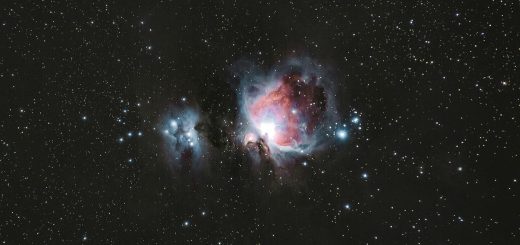How the Maya Built Their Advanced Civilization

Hey there, amazing readers! 🖐️ Just a quick note: yes, we know there are a lot of ads here. Trust us, we get it—it’s not the prettiest look, but they help us keep this blog alive and kicking. Those pesky little ads cover the costs of all the behind-the-scenes magic, from hosting and tech stuff to creating content we hope you’ll love.
We’re committed to delivering quality posts, and your support (even just sticking around despite the ads) means everything to us. So, bear with us, and thanks for helping us keep the good vibes rolling. Now, on to the fun stuff! 😉
TRANSLATE BUTTON AT THE END OF THE ARTICLE
A Quick Overview
The Maya civilization is one of the most captivating societies in ancient history.
Known for their impressive architecture, complex societal structures, and advanced understanding of astronomy and mathematics, the Maya left an indelible mark on human history.
In this article, we will explore how the Maya built their advanced civilization, highlighting their origins, geographic advantages, agricultural practices, architectural achievements, religious influences, and much more.
Discovering the Fascinating World of the Maya Civilization
Diving into the Maya civilization is like opening a treasure chest brimming with amazing artifacts and stories.
The Maya flourished in Mesoamerica from about 2000 BC until the arrival of Europeans in the 16th century.
Their culture thrived in what is now Mexico, Guatemala, Belize, Honduras, and El Salvador.
When we think of the Maya, visions of grand pyramids, intricate carvings, and vibrant murals often come to mind.
Their cities—Tikal, Palenque, and Copán—boasted towering structures and were hubs of trade, politics, and culture.
These cities were often connected by a network of roads, facilitating communication and commerce.
One remarkable aspect of Maya society is its deep-rooted connection to the environment.
The Maya were not just passive inhabitants of their land.
They skillfully adapted their agricultural practices to the changing conditions of the region.
They cultivated diverse crops, including maize, beans, and squash, allowing them to sustain a large population.
The achievements of the Maya were not limited to their physical structures or agricultural prowess.
Their contributions to mathematics, astronomy, and writing are equally astonishing.
The Maya developed a sophisticated numeral system, which included the concept of zero—something that would take Europe several centuries to embrace.
Today, scholars continue to unearth the mysteries of the Maya.
Archaeological discoveries are still being made that shed light on this rich civilization.
Each find adds another layer to our understanding of how the Maya built their advanced society.
The Origins of the Maya: A Journey Through Time
The story of the Maya begins in the Preclassic period, around 2000 BC.
It wasn’t just an overnight success; it was about thousands of years of development.
Early Maya communities were largely agricultural and lived in small villages.
Over time, these settlements grew and evolved, leading to more complex societal structures.
By around 1000 BC, the Maya began to establish ceremonial centers.
Sites like Nakbé and El Mirador began to emerge as important hubs of culture and trade.
These early cities featured monumental architecture and served as focal points for religious and political activities.
Fast forward to the Classic period (250-900 AD), and we see the Maya civilization truly flourish.
This era marked the height of Maya achievements, with the construction of grand cities featuring impressive temples and pyramids.
Tikal and Calakmul became prominent power centers, each vying for dominance.
What’s fascinating is the level of sophistication the Maya achieved in governance.
They had city-states ruled by kings, and each city operated almost like its own independent country.
Political alliances and conflicts shaped their history, leading to a dynamic social landscape.
The collapse of several large city-states around the late 8th to early 9th century AD poses intriguing questions.
Was it due to warfare, environmental factors, or social upheaval?
The debate continues, but one thing’s clear: the Maya left behind a rich tapestry of history that continues to capture our imagination.
The Maya’s Geographic Advantage: Nature’s Perfect Canvas
The geographical setting of the Maya civilization played a crucial role in their development.
Nestled between mountains, rivers, and lush forests, the Maya had access to diverse natural resources.
The varied landscapes allowed them to cultivate different crops and hunt a wide range of wildlife.
The tropical climate offered both advantages and challenges.
While abundant rainfall supported agriculture, it also brought the threat of flooding.
The Maya adapted to these conditions with innovative farming techniques.
They employed raised-field agriculture, which helped manage water levels and improve crop yields.
But it wasn’t only about farming.
The Maya used the rivers for trade and transportation.
Canoes glided through the waterways, connecting communities and facilitating commerce.
Imagine a bustling marketplace with traders exchanging goods from different regions!
Additionally, the limestone bedrock found in many parts of the Maya territory provided materials for construction.
The Maya crafted their iconic structures from this resource, leading to impressive buildings that have withstood the test of time.
Being in such a bountiful environment allowed the Maya to focus on advancements in various fields.
They weren’t just surviving; they were thriving, exploring arts, science, and culture.
Agriculture: The Backbone of Maya Society and Economy
Agriculture was the heart of Maya life.
They cultivated staple crops, with maize at the forefront.
You could say maize was their bread and butter—or rather, their corn and beans!
The three main crops they cultivated—maize, beans, and squash—are often referred to as the "Maya triad."
Maya farmers employed a variety of techniques to maximize their agricultural output.
One notable method was slash-and-burn agriculture.
This involved clearing land by cutting down vegetation and burning the remnants.
The ashes enriched the soil, promoting healthy crop growth.
The Maya also mastered terracing, particularly in hilly areas.
They built stepped fields that prevented soil erosion and retained moisture.
This innovation allowed them to cultivate more land efficiently.
Chinampas, or floating gardens, were another ingenious agricultural method used, especially in wetland areas.
These small, rectangular areas of fertile arable land were built in shallow lake beds, allowing the Maya to grow crops even in adverse conditions.
Food surplus played a pivotal role in the growth of Maya cities.
It supported a larger population and allowed for the development of specialized labor.
People could focus on various professions, from artisans to priests.
The importance of agriculture extended beyond just sustenance.
It was deeply woven into their religious beliefs and rituals.
The Maya celebrated agricultural festivals, honoring gods and thanking them for bountiful harvests.
Ingenious Architecture: Building Cities That Lasted
Maya architecture is a testament to their ingenuity and skill.
The Maya constructed impressive cities filled with grand plazas, temples, and pyramids.
Each structure served a specific purpose, from religious ceremonies to administrative functions.
One of the most iconic structures is the stepped pyramid, a hallmark of Maya architecture.
These pyramids often served as temples, where priests conducted rituals.
The Pyramid of the Sun in Teotihuacan, although not Maya, influenced their architectural style.
Maya builders were masters of stonework.
They used limestone to create detailed carvings, sculptures, and reliefs, often depicting gods, rulers, and important historical events.
The artistry is breathtaking, and many pieces still evoke awe today.
The layout of Maya cities was often carefully planned.
Major structures were positioned around large plazas, serving as centers for social gatherings and ceremonies.
This arrangement facilitated community interaction and reinforced social hierarchies.
While many buildings have crumbled, some remain remarkably well-preserved, allowing us to glimpse the past.
The site of Palenque, with its stunning Temple of the Inscriptions, reveals the architectural mastery of the Maya.
The construction techniques employed by the Maya were advanced for their time.
They utilized corbel arch techniques, allowing for the creation of spacious interiors without the need for traditional archways.
Their commitment to architecture wasn’t just for beauty; it had practical implications.
These structures were designed to withstand the elements, showcasing their understanding of environmental conditions.
The Role of Religion in Shaping Maya Culture
Religion was woven into the fabric of Maya society.
The Maya believed in a pantheon of gods who governed various aspects of life, including agriculture, rain, and the underworld.
They viewed the world as a dynamic interconnection of spiritual and earthly realms.
Rituals and ceremonies were integral to their culture.
The Maya performed elaborate rites, often involving music, dance, and offerings.
Human sacrifice, while rare, did occur in some instances, believed to appease the gods and ensure prosperity.
Temples were not just architectural wonders; they served as sacred spaces.
People gathered for worship, and priests held significant power, acting as intermediaries between the celestial and terrestrial.
The Maya calendar played a significant role in religious practices.
It helped them track important dates for festivals and agricultural cycles.
This calendar was more than a tool; it was a sacred guide for their spiritual and daily lives.
Mythology also played a vital role.
Stories of creation, hero journeys, and cosmic battles filled their narratives.
These tales passed down through generations, shaping their identity and values.
Religion influenced art and literature as well.
Many murals and carvings depict religious themes, showcasing their beliefs and illustrating their worldview.
Even today, remnants of Maya spirituality can be seen in the traditions of contemporary Maya communities, showcasing the enduring influence of their ancient beliefs.
The Maya Calendar: A Marvel of Timekeeping Genius
The Maya calendar is a fascinating and intricate system.
Unlike the Gregorian calendar we use today, the Maya employed several interlocking cycles to measure time.
The Tzolk’in, a 260-day calendar, and the Haab’, a 365-day calendar, formed the backbone of their timekeeping.
The Tzolk’in revolved around 20 periods of 13 days, creating a unique cycle that was significant for religious ceremonies.
It helped structure their rituals and agricultural activities.
The Haab’ was more aligned with the solar year, consisting of 18 months of 20 days each, plus a short month of five days.
This combination allowed the Maya to effectively track seasons, crucial for farming and festival planning.
One of the most remarkable aspects of the Maya calendar is the Long Count.
This system recorded longer periods of time and helped document historical events.
It consisted of a series of cycles, with each cycle representing a different unit of time.
The accuracy of the Maya calendar is noteworthy.
They calculated celestial events with remarkable precision, allowing them to predict solar and lunar eclipses.
Their observations laid the groundwork for modern astronomy.
The calendar also played a role in their mythology.
Many creation stories and prophecies were tied to specific dates, further intertwining their spiritual beliefs with timekeeping.
Even today, scholars study the Maya calendar to decipher historical events and understand their complex worldview.
It serves as a testament to their advanced understanding of time and the cosmos.
Writing and Language: The Art of Communication
The Maya developed a sophisticated writing system known as hieroglyphics.
This system combined logograms and syllabic signs, allowing them to express a wide range of ideas and concepts.
Imagine trying to communicate using a blend of pictures and sounds—truly remarkable!
This writing system was used for various purposes, such as recording historical events, religious texts, and even poetry.
The inscriptions on monuments and ceramics provide invaluable insights into their society.
Maya scribes were highly respected, serving as record keepers and creators of historical texts.
They documented everything from royal lineages to astronomical events.
These records have been crucial for understanding Maya history and culture.
The deciphering of Maya hieroglyphics has been a challenge for scholars.
It wasn’t until the latter half of the 20th century that significant progress was made.
As more symbols were translated, we gained a clearer picture of their stories and beliefs.
Maya literature included a variety of genres, from religious texts to mythological tales.
The Popol Vuh, a sacred book of the K’iche’ Maya, is one of the most famous examples.
It narrates creation stories and the adventures of hero twins, showcasing the richness of their literary tradition.
Language also played a role in identity.
The Maya spoke various languages, belonging to the Mayan language family.
These languages continue to be spoken by millions today, highlighting the enduring cultural legacy of the Maya.
In a world that often seems dominated by technology, the Maya’s commitment to written language reminds us of the power of words.
Their ability to communicate across time and space captures my imagination.
Trade Networks: Connecting the Maya with the World
Trade was a vital component of Maya civilization, allowing for the exchange of goods, ideas, and culture.
The Maya established extensive trade networks that connected various city-states and facilitated interactions with neighboring cultures.
They traded a variety of goods, from agricultural products to luxuries like jade and cacao.
Cacao, in particular, was highly prized and used as currency in some instances.
Imagine sipping on hot cocoa while discussing trade deals!
The Maya also traded textiles, pottery, and obsidian tools, which were essential for daily life.
This exchange of goods enriched their culture and fostered economic growth.
Trade routes crisscrossed the region, utilizing both land and water.
Canoes navigated rivers and lakes, while footpaths connected distant cities.
This network of trade helped create a sense of unity among the diverse Maya communities.
Cultural exchange was as significant as economic trade.
Ideas, art, and religious practices spread across the region, contributing to the rich tapestry of Maya civilization.
Archaeological evidence shows that the Maya interacted with other cultures, including the Olmecs and the Teotihuacan.
These interactions enriched their society and shaped their development.
Trade also played a role in the rise and fall of city-states.
Control over trade routes and resources could shift power dynamics, influencing political relationships.
Today, we can see the impact of ancient trade networks on modern Maya communities.
Many continue to engage in trade, showcasing the enduring legacy of their ancestors.
The Importance of Astronomy in Maya Life
Astronomy held a special place in Maya society.
The stars weren’t just twinkling dots in the sky; they were a source of knowledge and guidance.
The Maya observed celestial movements and recorded them with impressive accuracy.
Their understanding of astronomy influenced agriculture, religion, and daily life.
The seasonal cycles determined planting and harvesting times, ensuring food security for their communities.
Maya astronomers tracked celestial bodies, notably the sun, moon, and planets.
They developed mathematical formulas to predict eclipses and other astronomical events.
This level of precision speaks volumes about their intellectual capabilities.
Observatories, such as the one at Uxmal, were constructed to study the heavens.
These structures often aligned with celestial events, showcasing the Maya’s deep connection to the cosmos.
Religious beliefs were intertwined with their astronomical observations.
Many ceremonies were scheduled around celestial events, reinforcing the idea that the heavens influenced earthly matters.
My personal favorite aspect of their astronomy is how they related celestial events to their mythology.
For example, the appearance of certain constellations was linked to their creation stories and hero tales, blending science and spirituality beautifully.
The legacy of Maya astronomy continues today.
Modern astronomers acknowledge the precision of Maya calculations, and their practices inspire contemporary studies of the stars.
In a world bustling with technology, I find it refreshing to reflect on how ancient societies like the Maya viewed the universe.
Their curiosity and dedication to understanding the cosmos resonate with my own wonder about the stars.
Decline of the Maya: Mysteries and Theories Explored
The decline of the Maya civilization remains a topic of great intrigue.
At its peak, the Maya flourished, but by the late 9th century, many cities were abandoned.
The exact reasons for this decline are still debated among scholars.
Several theories exist regarding the fall of the Maya.
One popular hypothesis involves environmental factors.
Deforestation and climate change may have led to prolonged droughts, which severely affected agricultural productivity.
Another theory suggests that social unrest played a role.
The growth of city-states led to competition for resources.
Internal conflicts and power struggles may have contributed to the collapse of political structures.
Overpopulation might also be a factor.
As cities grew, they faced challenges in sustaining large populations.
The strain on resources could have triggered a collapse in social order.
Natural disasters, such as earthquakes and hurricanes, could have further exacerbated the situation.
The Maya lived in a seismically active region, and catastrophic events could disrupt communities and economies.
Interestingly, while many major cities fell into decline, some Maya communities continued to thrive in the northern Yucatán Peninsula.
The resilience of these communities highlights the complexity of the Maya’s decline.
Archaeological findings continue to shed light on this mystery.
Each excavation reveals more about the lives of the Maya and the factors that influenced their civilization’s trajectory.
The decline of the Maya is a reminder of the fragility of civilizations.
It sparks my curiosity about how societies adapt to change and the lessons we can learn from history.
Legacy of the Maya: Influences on Modern Culture Today
The legacy of the Maya civilization is felt far beyond its ancient boundaries.
Their contributions to agriculture, mathematics, astronomy, and art continue to influence modern culture in various ways.
Let’s start with agriculture.
Many staple crops we enjoy today, like maize and beans, have roots in Maya farming practices.
Their techniques still inspire sustainable farming methods in contemporary agriculture.
The Maya calendar has also left a lasting impact.
Its intricate design and focus on cycles resonate in various cultures around the world.
Today, many people still explore the significance of time in relation to nature and spirituality.
In literature and art, the Maya’s influence is evident.
Their mythology and stories inspire modern writers, filmmakers, and artists.
You can even find references to Maya culture in popular media, highlighting their enduring allure.
The rich traditions of contemporary Maya communities showcase their resilience and cultural pride.
Many Indigenous Maya people continue to practice their customs, languages, and beliefs, preserving the heritage of their ancestors.
Modern archaeology and anthropology owe much to the work done on Maya civilization.
Scholars’ efforts to understand the Maya have paved the way for broader studies of ancient societies and their complexities.
I find it fascinating how the Maya’s intricate craftsmanship influences modern design.
Their beautifully crafted pottery, textiles, and architecture serve as inspiration for artists around the globe.
In education, the Maya remain a vital subject of study.
Schools and universities worldwide teach about their civilization, encouraging an appreciation for diversity and the complexity of human history.
The legacy of the Maya reminds us of the importance of cultural heritage.
Their achievements and struggles continue to resonate through time, inspiring awe and curiosity in each new generation.
Conclusion
The Maya civilization stands as a testament to human ingenuity, resilience, and creativity.
From their sophisticated agricultural practices to their stunning architectural achievements, the Maya built a society that thrived for centuries.
Their contributions to mathematics, astronomy, and writing are impressive, showcasing their intellectual depth.
As we reflect on the Maya’s legacy today, we can appreciate the complexities of their society while learning from their achievements and challenges.
The mysteries of their decline intrigue us, reminding us of the delicate balance between civilization and nature.
In exploring the Maya, we encounter a rich tapestry of culture, history, and knowledge.
As we continue to uncover the secrets of their past, let’s celebrate the enduring impact of the Maya on our world today.

The Enlightenment Journey is a remarkable collection of writings authored by a distinguished group of experts in the fields of spirituality, new age, and esoteric knowledge.
This anthology features a diverse assembly of well-experienced authors who bring their profound insights and credible perspectives to the forefront.
Each contributor possesses a wealth of knowledge and wisdom, making them authorities in their respective domains.
Together, they offer readers a transformative journey into the realms of spiritual growth, self-discovery, and esoteric enlightenment.
The Enlightenment Journey is a testament to the collective expertise of these luminaries, providing readers with a rich tapestry of ideas and information to illuminate their spiritual path.
Our Diverse Expertise 🌟
While our primary focus is on spirituality and esotericism, we are equally passionate about exploring a wide range of other topics and niches 🌍📚. Our experienced team is dedicated to delivering high-quality, informative content across various subjects ✨.
To ensure we provide the most accurate and valuable insights, we collaborate with trusted experts in their respective domains 🧑🏫👩🏫. This allows us to offer well-rounded perspectives and knowledge to our readers.
Our blog originally focused on spirituality and metaphysics, but we’ve since expanded to cover a wide range of niches. Don’t worry—we continue to publish a lot of articles on spirituality! Frequently visit our blog to explore our diverse content and stay tuned for more insightful reads.





